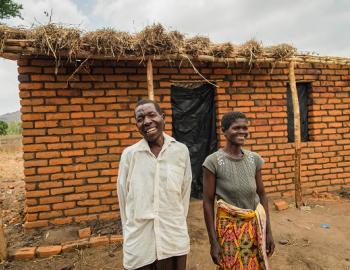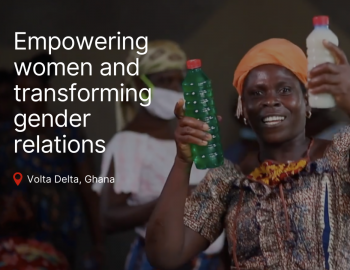REPORT: 10 things to know: Gender equality and achieving climate goals
REPORT: 10 things to know: Gender equality and achieving climate goals
Although climate change and poverty are increasingly recognised as interlinked global problems, responses from governments and development agencies often focus on their scientific and economic dimensions only. This guide highlights the advantages and challenges of pursuing climate compatible development from a gender perspective.
International frameworks are gradually reflecting gender issues better, but all too often wording about gender is simply added to existing policies, while women’s views, needs and participation are – in reality – excluded from climate change responses and development initiatives. Moreover, women are frequently perceived as victims, with little consideration for the contribution and leadership they could provide in mitigating and adapting to climate change. This guide summarises the findings and recommendations of a study on the benefits and challenges of pursuing climate compatible development from a gender perspective.
The research looked at four main questions (see box), using case studies from Peru, India and Kenya. All three case studies have climate-related disaster risk management and climate change adaptation goals.1 As most research into gender and climate change so far has been carried out in rural contexts, this study has put special emphasis on urban settings.
The objective is to contribute new evidence to this arena and provide insights that will help policy-makers and practitioners to foster more inclusive climate and development interventions. Here are 10 findings to prove that gender-sensitive approaches lead to better climate and development outcomes – and how they do it.
- It matters: Gender-sensitive approaches recognise people’s different needs
- It works: Gender-sensitive approaches lead to more sustainable outcomes for climate compatible development
- Location matters: Urban livelihoods differ and so should gender approaches to urban development
- Vulnerability to urban risks is exacerbated by everyday gender inequalities
- Beyond just ‘needs’: Gender approaches address power imbalances and unequal decision-making
- Promoting gender equality must be an explicit goal at the start of any project
- When projects do not use gender approaches, participatory processes can still ‘save the day’
- The drivers for gender-sensitive climate compatible development: Commitment, policy and skills
- Still a long way to go: Multiple obstacles prevent initiatives from transforming power relations
- Monitoring and evaluation of gender outcomes is vital to promote gender equality
This report was produced as part of a series of papers on gender and climate change, to read more, visit our page on Gender equality and achieving climate goals.



